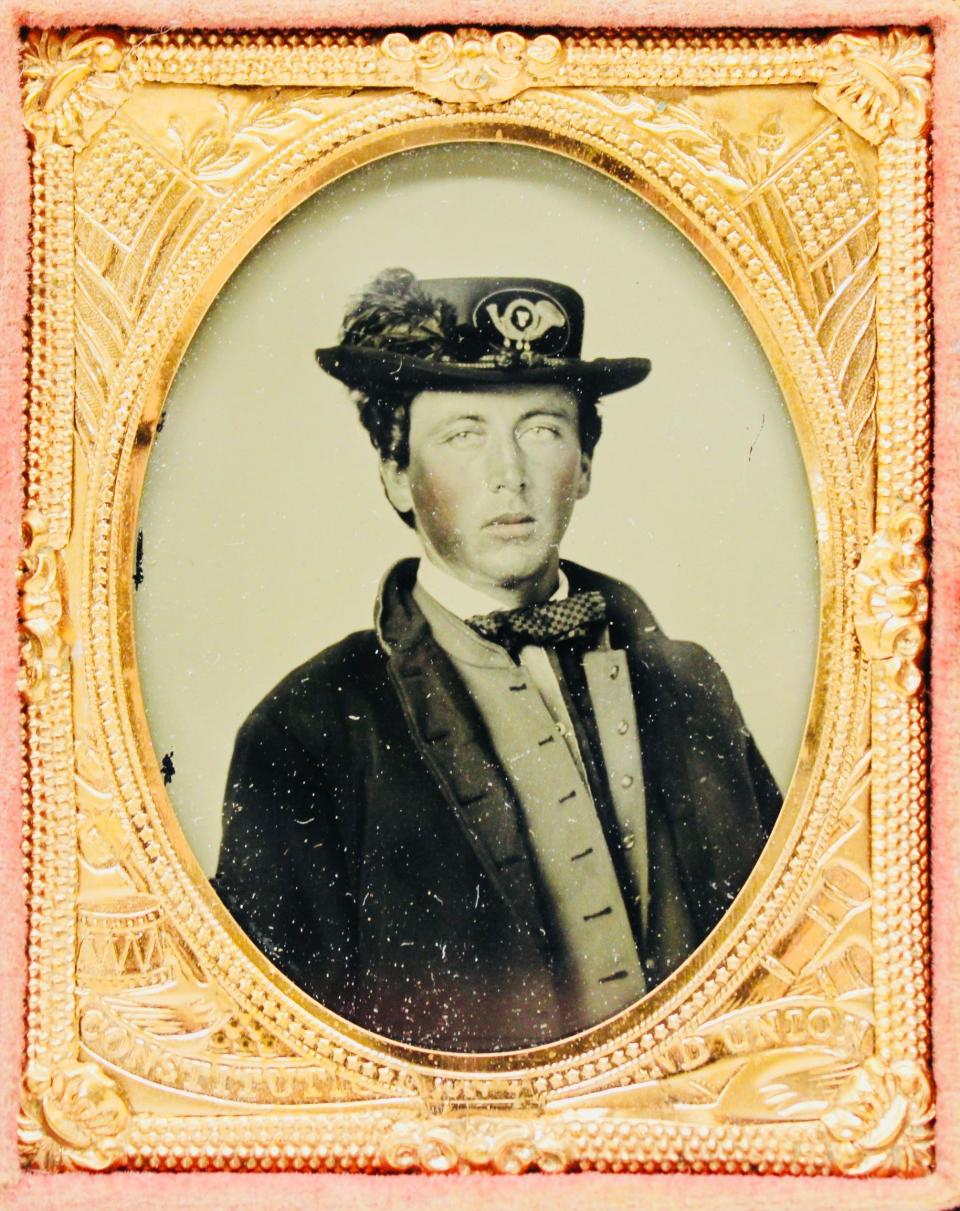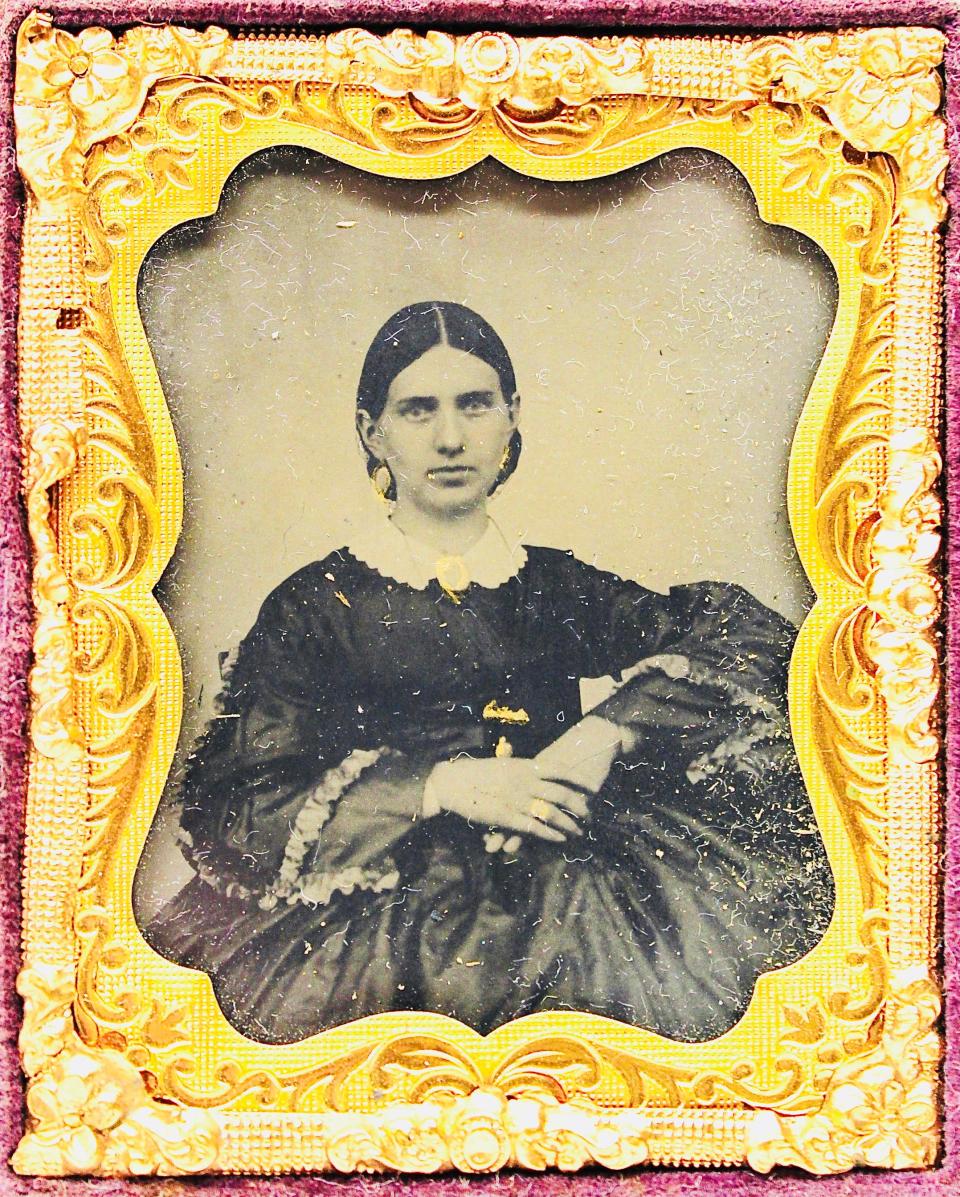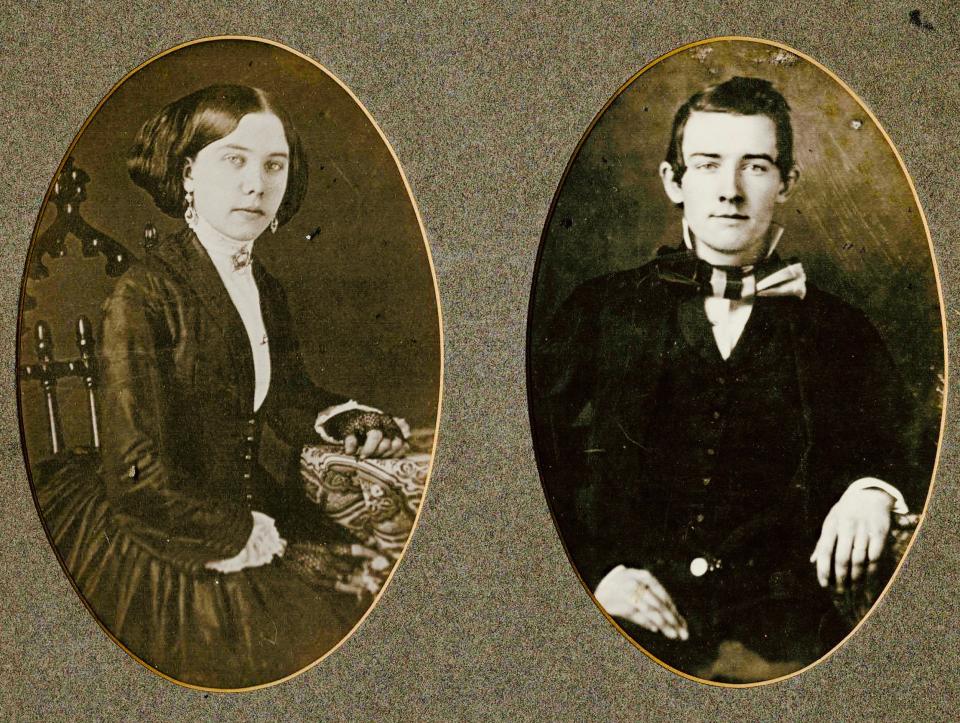Antique photographs paint a curious picture: What's the story behind them?
Historical photographs enchant us. Moments frozen in time provide glimpses into the past that fuel our curiosity and imagination.
The Washington County Historical Society is home to a large collection of historical photographs, from daguerreotypes and tintypes to cabinet cards. And within two 19th century photograph cases, ambrotype portraits capture the images of one local couple.
Each of these hinged photograph cases holds an ambrotype, a type of photograph produced from 1854 to the 1860s. Ambrotypes, also called collodion positives, replaced the earlier daguerreotype photograph.
Our two ambrotypes, measuring only 2 by 2 1/2 inches, capture the images of William Ellsworth Moats and Susan (Munson) Moats. William’s photograph is framed by a copper mat bearing two American flags, a drum and cannons, and the words “Constitution and Union.” Red velvet padding protects his portrait when the case is closed.

He was born Sept. 5, 1837, in Keedysville, to Daniel and Elizabeth Moats, and grew up with six siblings. His father was a cooper —a maker of barrels and casks.
After the Civil War began, William enlisted in the 7th Maryland Infantry Regiment in 1862. He was 24.
He served as a private in Company A from August 1862 to June 1865. The 7th Maryland served in the Shenandoah Valley before joining the V Corps of the Army of the Potomac. These troops saw action in the Peach Orchard and Pickett’s Charge during the Battle of Gettysburg, and later suffered heavy losses at the Siege of Petersburg in Virginia.
In 1864, William was treated for rheumatism at Patterson Park in Baltimore, a Civil War camp and hospital that grew out of Camp Washburn.
William Moats survived the war, marrying Susan Mariah Munson on Nov. 13, 1866. Susan, born July 30, 1839, was the daughter of Lewis and Elizabeth (Swope) Munson. William and Susan’s ambrotypes were most likely taken to commemorate their marriage.
William’s ambrotype reflects his service. He wears a flat-crown porkpie hat, a popular style among Civil War soldiers and young men of the 1860s. His hat is embellished with feathers and an embroidered gold infantry bugle, the 7 denoting his regiment. He is smartly dressed in a black wool jacket and contrasting vest, along with a diamond check bow tie.
Susan wears a dress of dark silk; her sleeves are lined with contrasting ruched trim. Her hair is done in a classic 1860s hairstyle, parted in the middle and pulled back in a low bun. The photographer hand-colored her jewelry gold, an additional cost at the time.

In 1870, William and Susan lived in Keedysville. William was a tailor while Susan kept house. By 1880, however, the couple had moved to Indiana, where they had a son, Ellsworth. They moved soon after to Mount Morris, Ill., and had a second son, Milton. William continued work as a tailor, and the family lived among neighbors who worked as brick masons, carpenters and clothing merchants.
The Moats family had returned to Hagerstown by 1900. William, then 62, and Susan, 60, lived with their son Milton. Although records show Susan had five children, only two sons lived past infancy.
William continued his work as a tailor in Hagerstown. The family’s neighbors worked in silk mills and tobacco factories; kept boarding houses and were carpenters, blacksmiths and dressmakers. And Milton Moats started work at the Moller Organ Company.
By 1920, William Moats was living as an “inmate” at the Washington County Home at Bellevue; he was 82 years old and still married to Susan, who lived alone at 805 Virginia Ave. This suggests that William’s health, either mental or physical, had deteriorated by then.
It's unclear when William died, but Susan died on April 15, 1928; they share a headstone at Fairview Cemetery in Keedysville. The ambrotypes in the Society's collection are quiet windows into their lives together in Washington County.
Do you recognize this couple?
While we're fortunate to know about William and Susan, photographs of other couples in the WCHS collection remain unidentified. WCHS will be sharing unidentified couples’ photographs on its Facebook page during February in the hope that they might be recognized.

Two such photographs feature a couple posing for the camera, their left arms propped on a table covered in a wool paisley cloth.
The young woman, with a hairstyle characteristic of 1853-1855, wears a dark silk dress. The young man wears a black wool suit and a wide, striped silk bow tie.
These photographs are early 20th-century copies of daguerreotypes that were taken in the mid-1850s, perhaps to celebrate the couple’s wedding.
We do not know their names or stories, but their photographs are intriguing. Who were they? What did they experience? What was their relationship like?
Find these and other historical photographs from our collection on the WCHS Facebook page or by visiting the WCHS website at washcohistory.org.
Abigail Koontz is the curator/program director for the Washington County Historical Society.
This article originally appeared on The Herald-Mail: Society's photo collection provides glimpses into past lives

